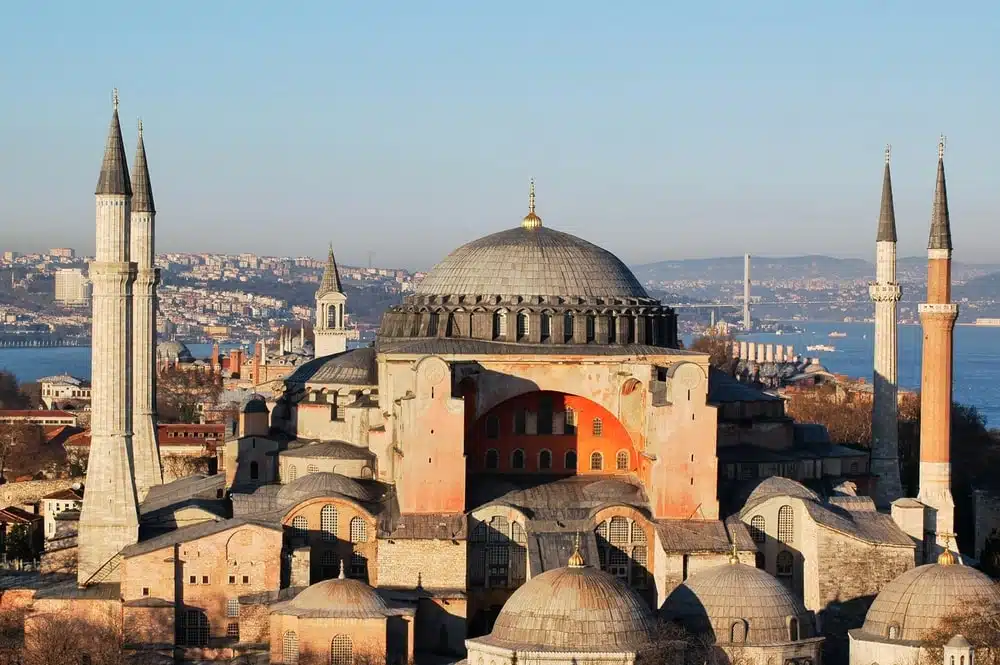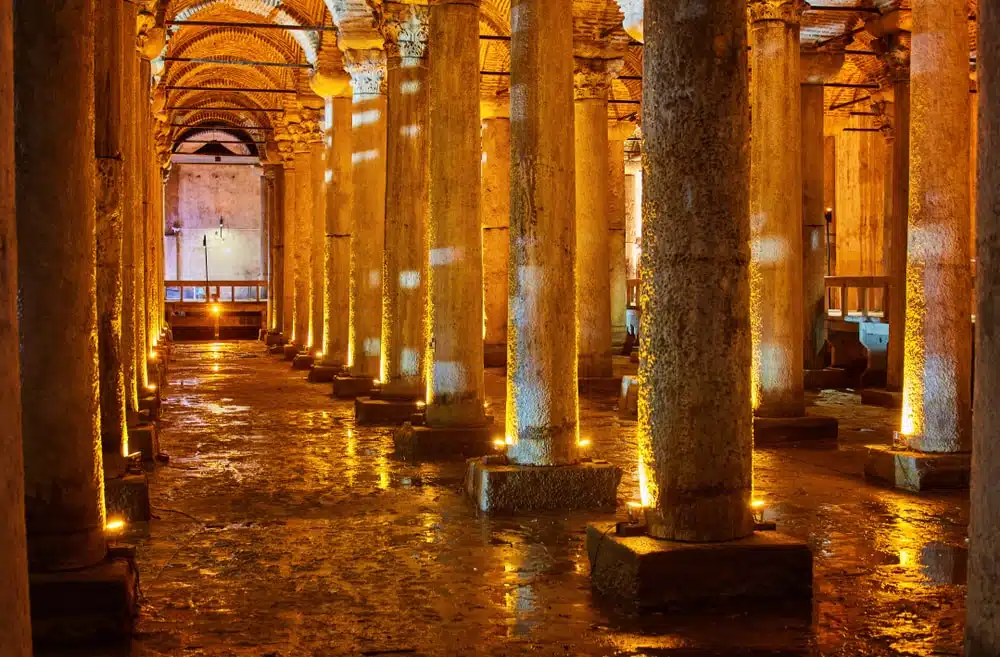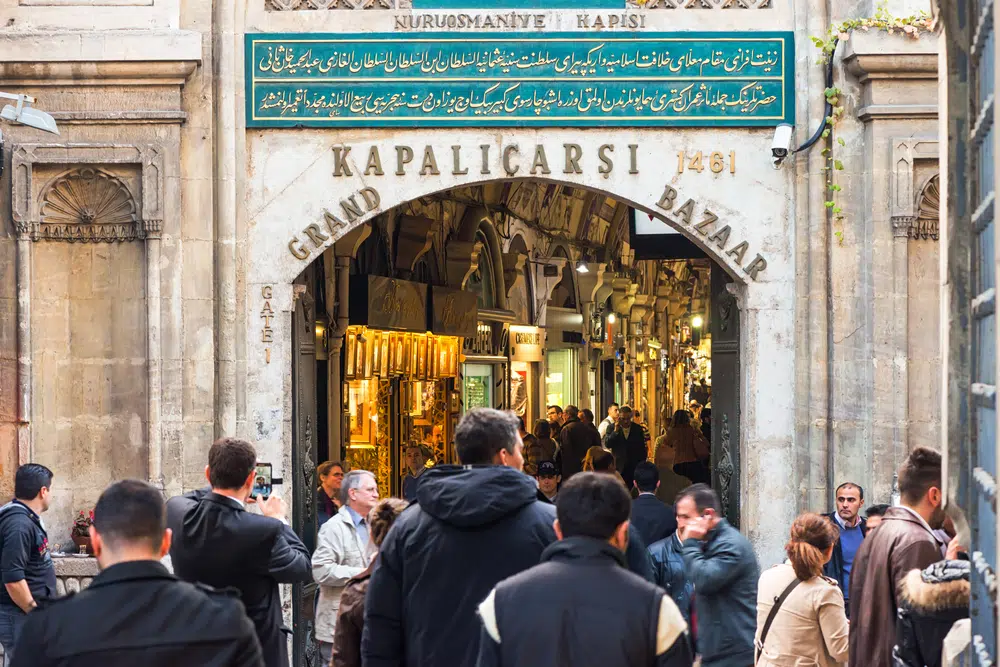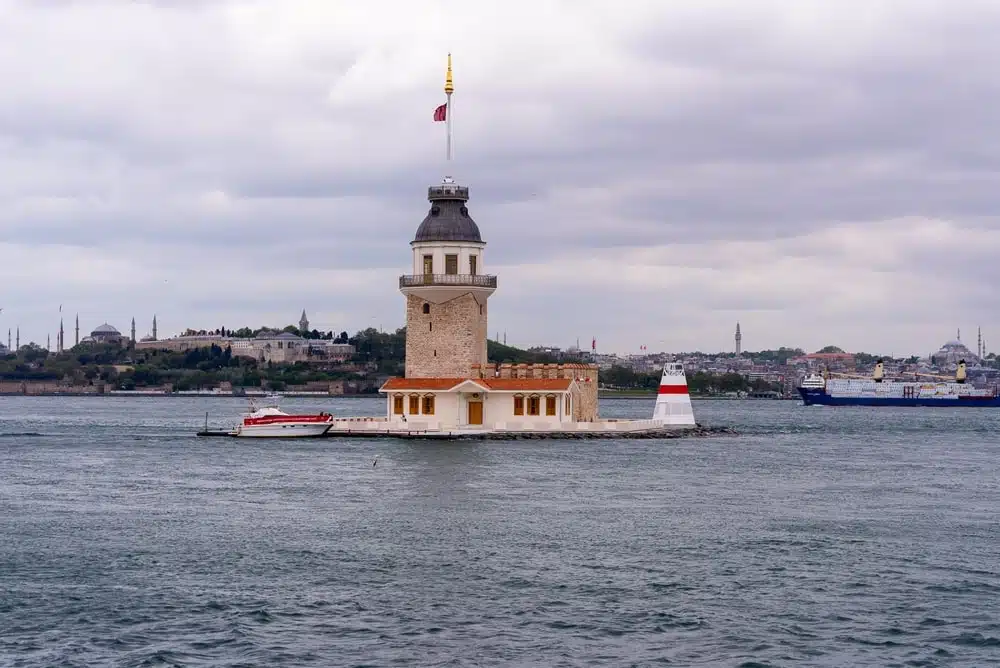Istanbul, where East meets West, is full of history, culture, and amazing sights. The famous thing in Istanbul is hard to choose because of its incredible diversity. From the stunning Hagia Sophia to the bustling Grand Bazaar with its spices and crafts, each place has its own story.
Walk through the lively streets and discover the beautiful Blue Mosque or enjoy a boat ride on the Bosphorus, taking in the city’s views. Each spot shows the unique spirit of Istanbul, making it a must-visit. In this post, we’ll explore the top highlights that make Istanbul truly special. Whether you’re planning a trip or just curious, let’s dive into what makes this city so unique.
City of Two Continents
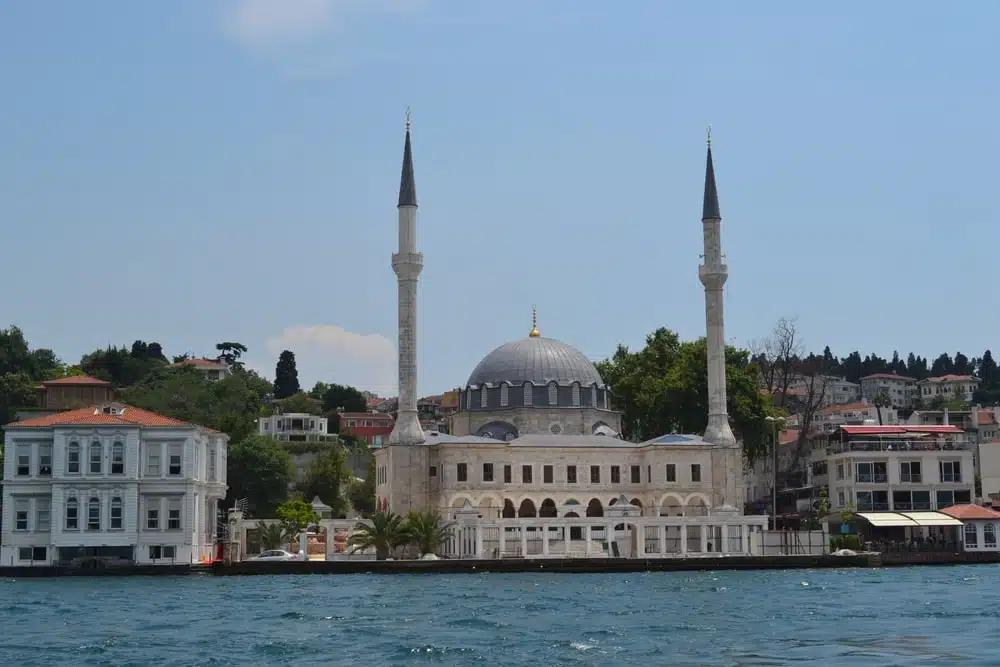
Istanbul’s unique geographical position, straddling two continents, Europe and Asia, is more than just a spectacular geographical fact; it’s the lifeblood of the city’s incredible history, culture, and daily life. This city, unlike any other in the world, offers a blend of Eastern and Western traditions, a famous thing in Istanbul that has shaped its identity throughout the centuries. The Bosphorus Strait not only divides the city into two parts but also connects the Black Sea with the Sea of Marmara, making Istanbul a crucial trade and cultural bridge between continents.
Walking through the streets of Istanbul, one can feel the pulse of a city that has been a capital to Roman, Byzantine, and Ottoman empires. Each empire has left its mark, contributing to the rich tapestry that is modern Istanbul. The convergence of two continents has fostered an environment of diverse religions, languages, cuisines, and architectures, making the city a living museum of human history. The cultural exchange that is facilitated by this unique position is unparalleled, offering visitors and residents alike a truly cosmopolitan experience.
Moreover, the strategic importance of Istanbul’s location has made it a focal point throughout history, influencing trade routes, military campaigns, and diplomatic relations. Today, it translates into one of the city’s greatest assets: its ability to offer a plethora of experiences, from enjoying a cup of Turkish tea on the European side to catching a ferry to Asia for dinner. This geographical marvel invites exploration and discovery, encouraging one to traverse continents within mere minutes, a feature that is quintessentially Istanbul. Among the many famous things in Istanbul, this unique ability to span two continents stands out, embodying the city’s rich cultural and historical tapestry.
Hagia Sophia’s Transformation
The Hagia Sophia stands as a testament to Istanbul’s layered history, embodying the city’s spirit of transformation and resilience. Originally constructed as a cathedral in 537 AD under the Byzantine Emperor Justinian I, it was the world’s largest building and an engineering marvel of its time. This famous thing in Istanbul was not only a place of worship but also a symbol of political and religious authority.
Over the centuries, the Hagia Sophia has witnessed and adapted to the city’s changing dynamics. In 1453, following the Ottoman conquest of Constantinople, it was converted into a mosque by Sultan Mehmed II. This transformation included the addition of Islamic architectural elements like minarets, a mihrab, and a minbar, blending seamlessly with the existing Christian mosaics and frescoes, a physical manifestation of Istanbul’s multicultural fabric. As a famous thing in Istanbul, the Hagia Sophia exemplifies the city’s rich historical and cultural heritage, drawing millions of visitors each year.
Today, as a museum, the Hagia Sophia continues to awe visitors with its majestic dome, intricate mosaics, and its unique story of transformation. It stands as a powerful symbol of coexistence, reflecting the city’s ability to evolve while respecting and preserving its diverse cultural heritage. The Hagia Sophia is not just an architectural wonder; it’s a bridge between eras, religions, and cultures, mirroring Istanbul’s own journey through time.
Basilica Cistern
Beneath the bustling streets of Istanbul lies one of its most mesmerizing wonders, the Basilica Cistern. Built in the 6th century during the reign of Byzantine Emperor Justinian I, this underground water reservoir is an engineering marvel, showcasing the advanced architectural and engineering skills of the Byzantines. The cistern, capable of holding 80,000 cubic meters of water, was crucial for supplying water to the Great Palace of Constantinople and other buildings on the city’s First Hill.
Venturing into the cistern, visitors are greeted by the serene and cool atmosphere, a stark contrast to the city’s lively streets above. The space is supported by 336 marble columns, each 9 meters high, arranged in 12 rows. The dimly lit, forest-like arrangement of columns, coupled with the sound of dripping water, creates an ethereal experience. Among its many columns, two are famously mounted on Medusa head bases, believed to have been brought to the cistern to negate the mythical creature’s curse. The Basilica Cistern is not just a marvel of ancient engineering but also a famous thing in Istanbul that captivates the imagination of all who visit.
The Basilica Cistern represents Istanbul’s rich historical layers and the city’s ability to surprise and captivate. Its hidden location and mysterious ambiance offer a unique glimpse into the city’s Byzantine past, underscoring Istanbul’s role as a custodian of history. Today, it not only serves as a historical site but also as a venue for cultural events, showcasing the city’s ability to repurpose its historical assets into vibrant cultural spaces. Among the famous things in Istanbul, the Basilica Cistern stands out as a must-visit landmark, blending ancient history with modern cultural relevance.
The Grand Bazaar
One cannot discuss Istanbul without mentioning one of the oldest and largest covered markets in the world, the Grand Bazaar. With its origins dating back to the 15th century, the bazaar has been the heart of Istanbul’s economic life for centuries, attracting traders, travelers, and locals alike. Its labyrinthine alleys, lined with over 4,000 shops, are a treasure trove of goods, from traditional Turkish carpets and hand-painted ceramics to gold, spices, leather goods, and the famous thing in Istanbul.
The Grand Bazaar is more than just a place for commerce; it’s a cultural and social hub where the art of negotiation and hospitality are practiced with zeal. The air is thick with the scent of spices, leather, and freshly brewed Turkish tea, inviting visitors to immerse themselves in the vibrant atmosphere. The sound of craftsmen at work, the sight of intricately designed lamps, and the taste of Turkish delight combine to create an experience that is quintessentially Istanbul, known for its Grand Bazaar, a famous thing in Istanbul.
Beyond its economic and cultural significance, the Grand Bazaar is a masterpiece of Ottoman architecture, featuring domed hallways, intricate tile work, and grand entrances. It is a living museum, reflecting the city’s historical and cultural evolution. Navigating its alleys, one can appreciate the continuity of trade traditions and the enduring spirit of Istanbul as a meeting place of cultures, peoples, and stories. The Grand Bazaar remains a famous thing in Istanbul, drawing visitors from around the world to experience its vibrant atmosphere.
Maiden’s Tower Legends
Perched on a small islet at the southern entrance of the Bosphorus Strait, the Maiden’s Tower (Kız Kulesi) is one of Istanbul’s most iconic landmarks and a famous thing in Istanbul. Its history is shrouded in legends, the most famous being the story of a sultan who built the tower to protect his daughter from a prophesied death by a snake bite. Despite his efforts, the prophecy came true, and the tower became a symbol of the unpredictable nature of fate.
The tower has served various functions throughout its history, from a Byzantine toll booth to an Ottoman lighthouse, and now as a restaurant and museum. Its strategic location has made it a vital watchtower and a picturesque focal point, capturing the imaginations of locals and visitors alike. The Maiden’s Tower’s silhouette against the backdrop of Istanbul’s skyline, especially at sunset, is a sight to behold, encapsulating the city’s romantic and mystical allure.
Beyond its physical beauty and legends, the Maiden’s Tower embodies Istanbul’s relationship with the sea and its strategic significance over millennia. It serves as a reminder of the city’s ability to blend myth with history, creating a rich cultural tapestry that fascinates and delights. Whether viewed from a ferry on the Bosphorus or visited up close, the Maiden’s Tower offers a unique perspective on Istanbul’s past and present, making it a famous thing in Istanbul.
Famous Thing in Istanbul
While it’s challenging to pinpoint the most famous thing in Istanbul, given its wealth of historical, cultural, and natural attractions, the convergence of two continents stands out as the city’s defining feature. This unique geographical and cultural fusion has given birth to an extraordinary cityscape, marked by iconic landmarks like the Hagia Sophia, the Basilica Cistern, the Grand Bazaar, and the Maiden’s Tower, each with its own story and significance.
Istanbul’s allure lies in its ability to offer a multitude of experiences, from exploring ancient monuments and bustling markets to enjoying the natural beauty of the Bosphorus and the warmth of Turkish hospitality. The city embodies a blend of the past and present, tradition and modernity, making it a captivating destination for travelers from around the world.
In conclusion, Istanbul’s fame cannot be attributed to a single landmark or feature. It is the city’s collective history, culture, and geographical diversity that make it truly unique. The spirit of Istanbul is found in its ability to harmonize contrasts, welcoming all who visit to discover its mysteries and delights. As a city that bridges continents and cultures, Istanbul stands as a testament to human civilization’s richness and the enduring appeal of exploring new horizons.

